Tommy O'Brien recalled Emmet Humphreys saying Jones was going to build another car after Dick's one. As far as we know, Jones never had plans to make any new cars without a buyer lined up. So, in 1930, when Jones undertook his most ambitious project to date, "a 4-door saloon made of metal", he must have had a buyer in mind. There is some thin evidence (below) that the buyer was John or Frank McMullan.
This is the one Thomond we have no photo of.

The car was worked on by coach painters John McNamara and Tommy McNamara. Their father John McNamara ran a coach painting firm on Dorset St, Dublin. In 1930, Jones contacted McNamara's to hand-paint the parts as they were made. McNamara sent his sons John McNamara junior and Tommy McNamara to Haddington Road.
John McNamara junior (Jacky) was born in Aug 1909. He recalled that Jones just wanted him for spraying (painting), not to help with building. He said: "I got cheesed off, they took so long to build them". His memory was that he left after a few days, less than a week, and he did not know his brother Tommy worked on it. But Tommy's memory was that he and John worked on it for some time. John said he never met Dick Humphreys (who was not involved with this car). Only Parsons and Jones were there when he went over.
John's brother Tommy McNamara was born in May 1912. He recalled working on the Thomond saloon car. He said that when they arrived at Jones', they found plans well advanced for the saloon. Benny Parsons would use days when business was slack to work on the car. Some days he would have too much normal servicing work to do, and the lads wouldn't be needed. Other days he'd show them a door, hand-beaten from metal, and the painters would set to work. The painting was a job just as skilled as the metalwork. All the scouring, priming and coachlining was done by hand.
Tommy McNamara said the Thomond was eventually spray-painted ivory and black in preparation for a visit by Sean Lemass. Lemass was a TD from 1924 and a leading figure in Fianna Fail in opposition, drafting their economic programme. Fianna Fail got into government in 1932 and Lemass became Minister for Industry and Commerce. Tommy recalled Jones saying: "Mr. Lemass is coming." He did not come while Tommy was there.
Michael Keating says the body was perforated sheet metal over a wooden frame. John McNamara says it was lead-coated metal (rust-resistant).
The McNamara brothers went back to other work at the family firm before the Thomond was complete. Tommy thought the Thomond was going to be a drophead (convertible). He said during the early stages the car resembled a Hamilton. John thought it was going to be an open tourer, and was under the impression it was the first Thomond. Neither John nor Tommy saw it finished.
Body:
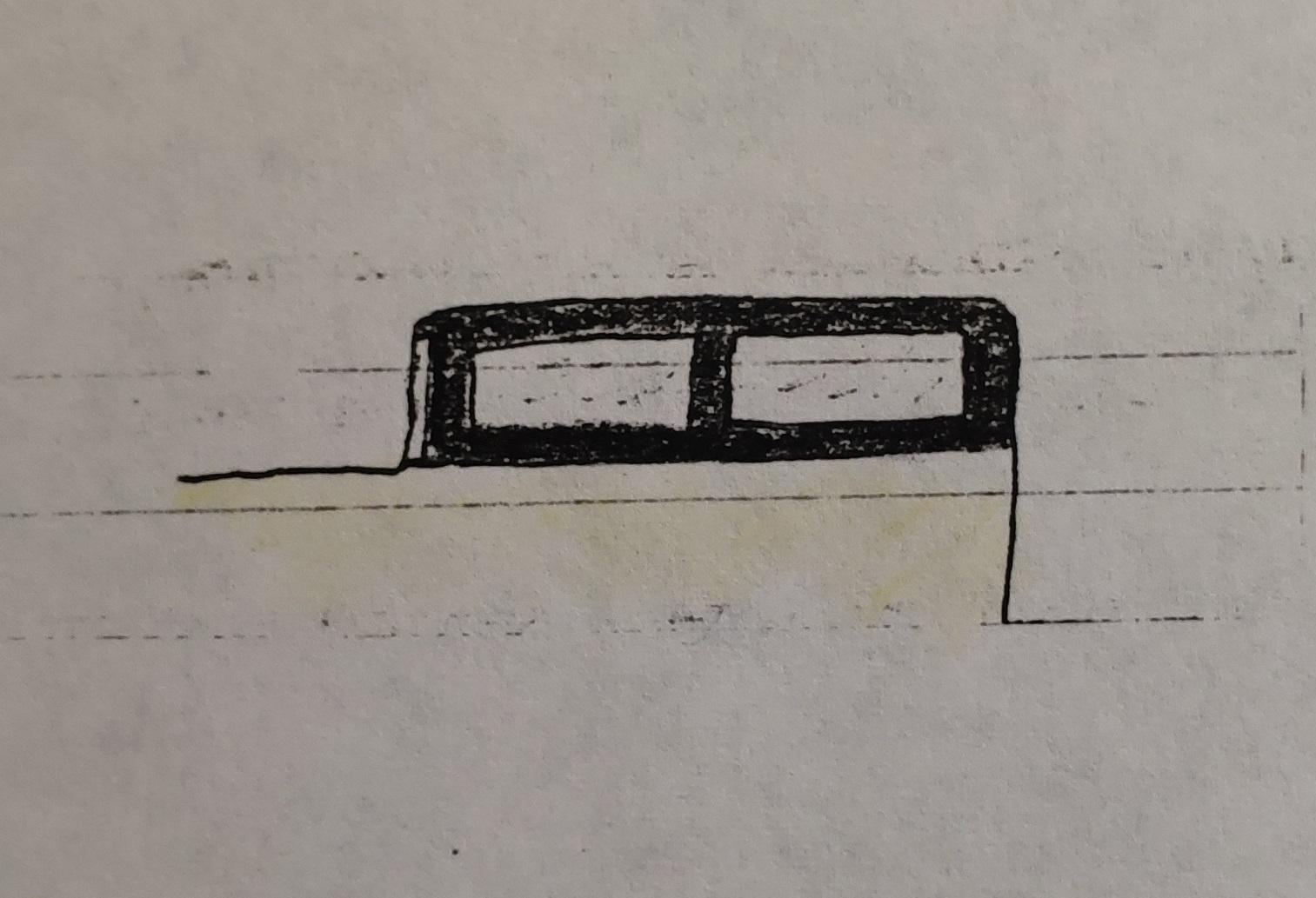
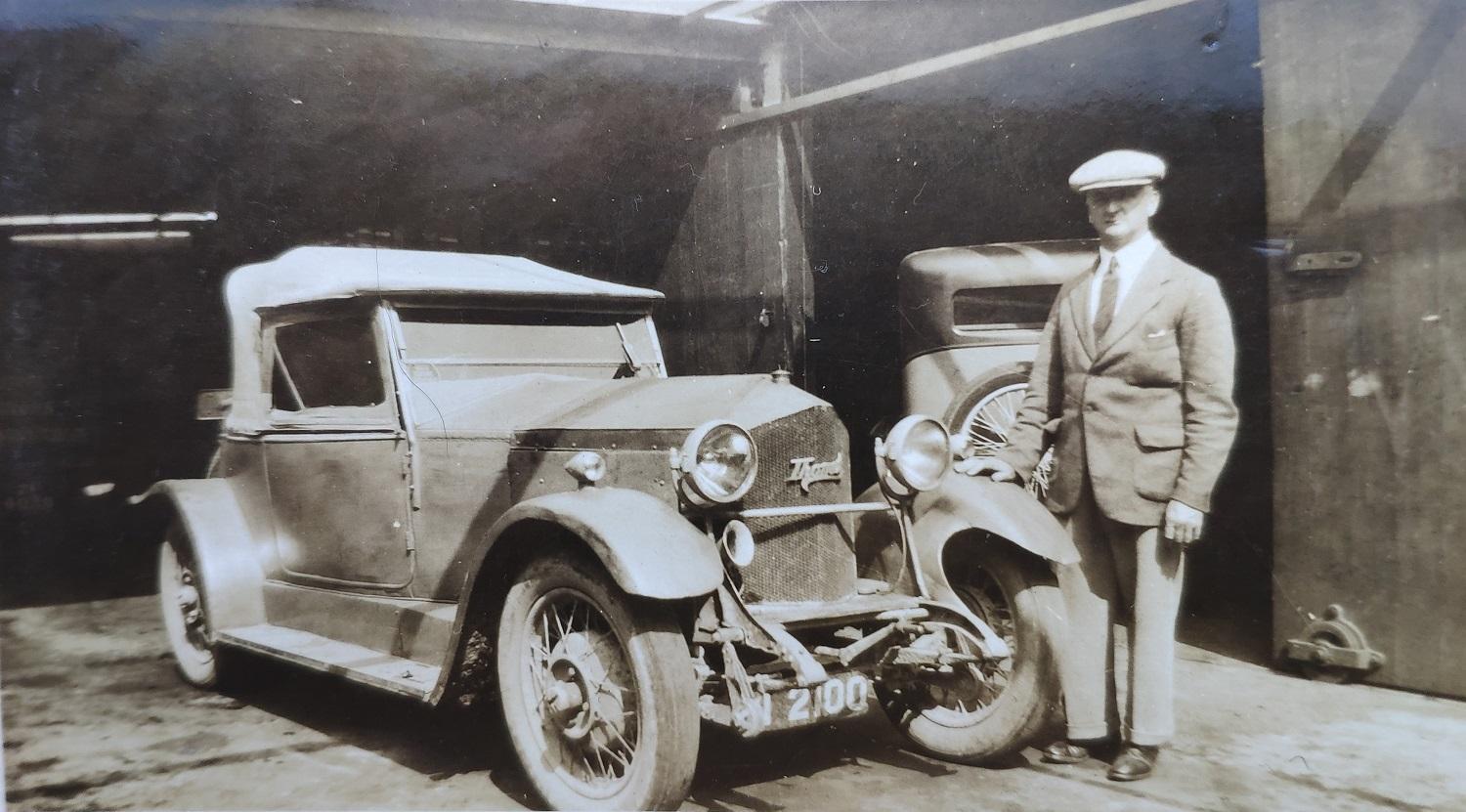
The car in the background of this picture of
Thomond no.2, probably 1932-1933,
looks a bit like how Thomond no.3 is described.
Could this be Thomond no.3?
Mike Worthington-Williams
thought not:
"It looks like a pressed-steel body, however,
and if asked we'd have said it was an early Hillman Minx."
He said to me:
"It appears to have a pressed steel body and I'm sure
Thomond wouldn't have run to that. It looks more like a 1932 Hillman Minx
or something similar".
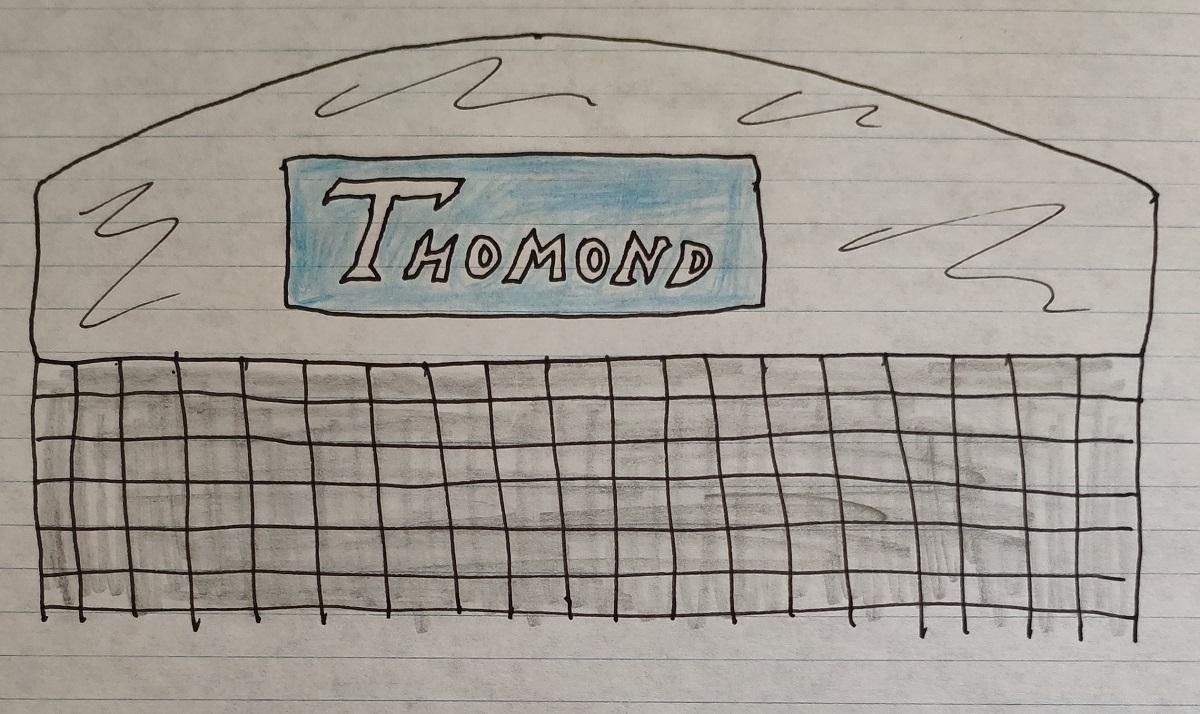
An idea of what the front logo looked like.
Michael Keating
said it was on a deep blue enamel plate on the radiator.
The Thomond saloon was seen around 1943 in Parsons' garage, Mespil Rd, by Paddy Doherty, a mechanic then working there.
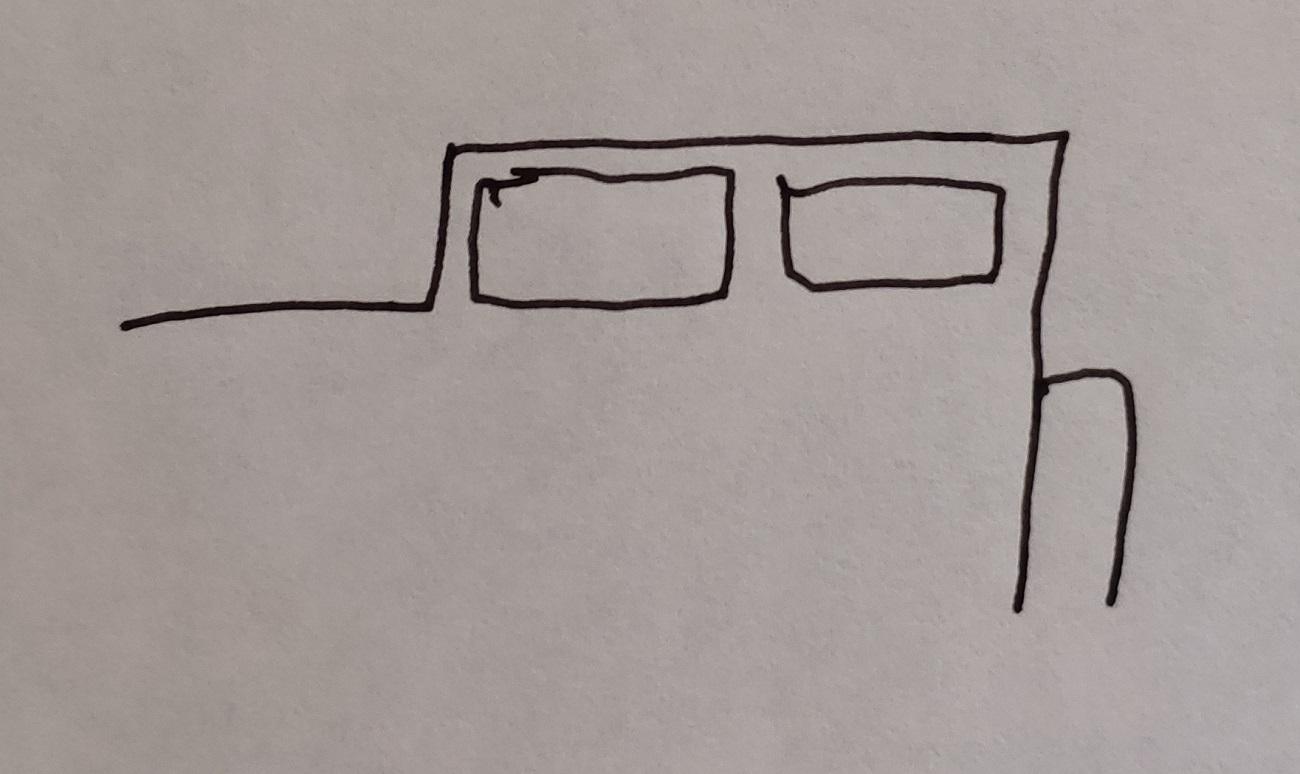

John Mulholland listed at 8a Lower Mount St, Dublin,
on p.1344
of [Thom's, 1940].
Jim Barr thought Mulholland built the body for this Thomond.

The death of
George Molloy in 1961.
He was born in 1894.
He qualified as a dentist.
He married in 1916
to Bridget Jones.
He stopped practicing as a dentist before the war.
He became a bookie.
He lived at 27 Herbert Place.
He did not keep the Thomond for long.
I was told that John McMullan worked at one time at 182 Pearse St. If true, this might explain how the Thomond was there, and it might be evidence John McMullan was the owner.
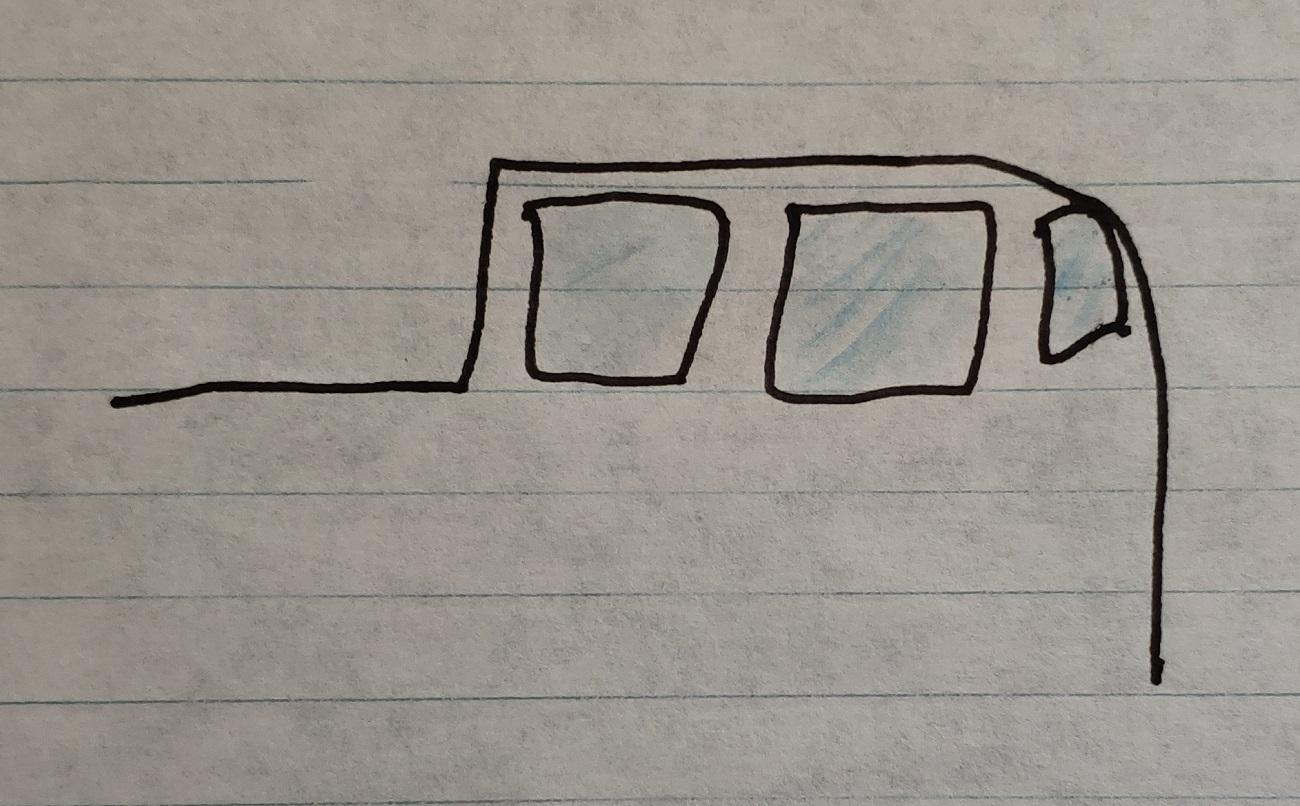
Please donate to support this site.
I have spent a great deal of time and money on this research.
Research involves travel and many expenses.
Some research "things to do"
are not done for years, because I do not have the money to do them.
Please Donate Here
to support the ongoing research and
to keep this website free.